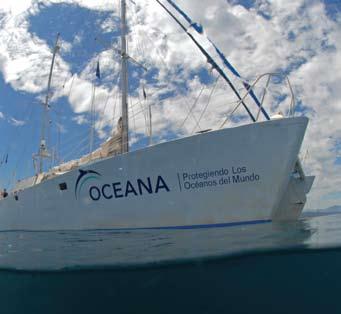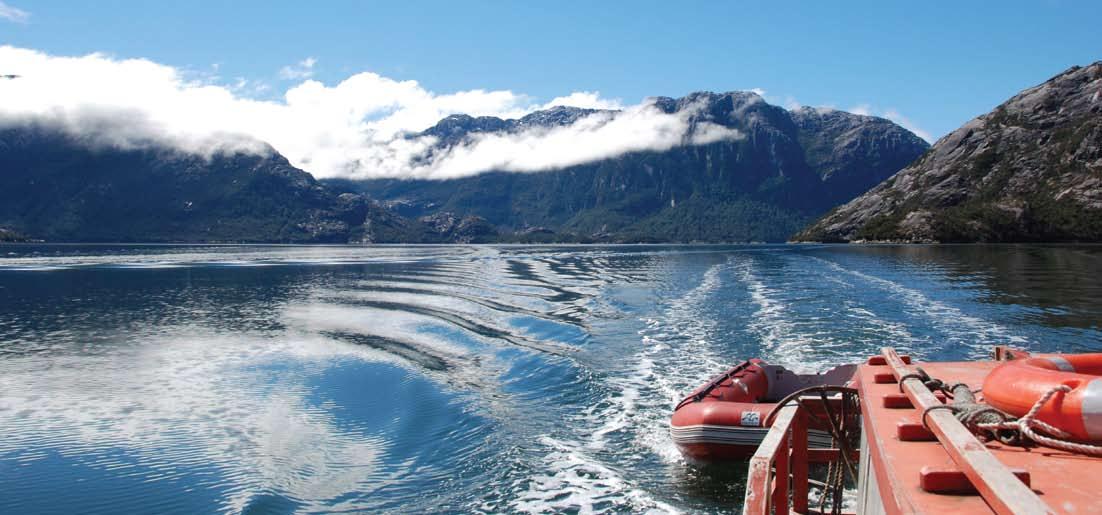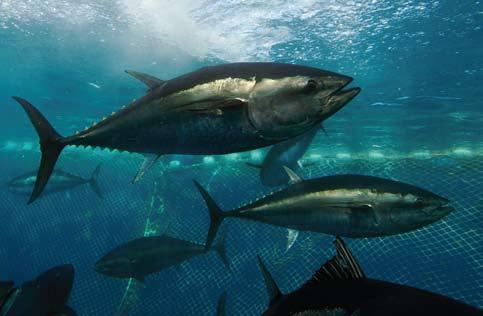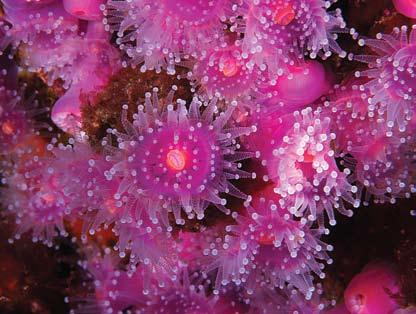
3 minute read
Expeditions
Oceana’s 2008 on-the-water expeditions resulted in multiple campaign victories. MarViva Med joined Ranger in the Mediterranean, and a team from Chile visited the pristine waters of Patagonia. The resulting photo and video documentation of rare species, as well as documentation of illegal fishing, provides further evidence for the protection of vulnerable marine species and habitats.
The United Nations Convention on Biological Diversity requires at least 10 percent of the oceans’ surface be protected by 2012.
OCEANA RANgERIN THE BAY OF BISCAY – CREATINg NEW MARINE pROTECTEd AREAS
After Oceana’s expedition to the Bay of Biscay, off the north of Spain, the Spanish government committed in 2008 to declaring six new marine protected areas.
Oceana’s catamaran, Ranger, set sail in spring 2008 with the goals of promoting the creation of new marine protected areas and documenting illegal bottom trawling in the bay.
With the help of an underwater robot that can dive down to 600 meters and record sealife and habitats, Ranger made several exciting species discoveries on the Spanish seafloor. The team discovered an ancient deep-sea white coral ecosystem in the Aviles Canyon, off the coast of Asturias. The find was particularly significant because recent studies estimate that almost half of the deep-sea coral reefs in Europe have disappeared, due in part to destructive bottom trawling.
The new findings were heavily covered by national and local media in Spain and were a key asset in Oceana’s efforts to convince the national government to designate new protected areas.
MARVIVA MEdIN THE MEdITERRANEAN SEA – SHuTTINg dOWN BLuEFIN FISHERY
After Oceana’s expedition to the Mediterranean Sea on the MarViva Med, the European Union ended the bluefin tuna fishing season several weeks early for most of the Mediterranean’s purse seine fleet, a move which saved up to 100,000 bluefin in 2008 alone. Additionally, the Spanish Parliament considered creating a bluefin tuna reserve south of the Balearic Islands, a critical spawning area for the fish.
MarViva Med began its maiden expedition with Oceana in May. The six-month initiative, which was carried out in collaboration with the MarViva Foundation, was aimed primarily at documenting illegal fishing of severely overfished bluefin tuna in the Mediterranean. The expedition also documented the impact of bottom trawling on marine ecosystems and identified areas that need protection.
During the campaign, the team recorded powerful images of bluefin tuna fattening pens and documented purse seiners illegally using spotter planes to find the fish. These photos, video and data were heavily covered in the media and used effectively by Oceana and allies in their successful effort to persuade the E.U. to close the bluefin fishery.
In addition, Marviva Med verified that the French vessels caught in 2007 for using illegal driftnets to catch immature bluefin tuna were no longer using the gear, and also exposed Italian driftnetters using the banned nets.
TORTEL ExpEdITION IN pATAgONIA – BRINgINg THE SEAFLOOR OF FjORdS TO LIFE
Oceana garnered national attention in Chile, including a feature in the Sunday magazine of La Tercera, with an expedition to the coldwater fjords of Chilean Patagonia. The team’s goal was to gather information about the marine creatures inhabiting the fjords, with the ultimate goal of establishing a Marine Protected Area (MPA) over 4.5 million acres.
Using an underwater remote-operated vehicle, Oceana documented 65 marine species, including diverse corals, crustaceans and sea cucumbers. During each expedition, the team worked with members of the local community. Ultimately, Oceana shared the expedition’s findings with the residents of Tortel, earning support for Oceana’s campaign and, combined with the press coverage of the expedition, putting the issue on the national agenda.
Establishing an MPA in the region would prevent the encroachment of Chile’s salmon aquaculture industry into Patagonia, which would cause pollution, threaten wild fish populations and negatively affect tourism.
© OCEANA | Eduardo Sorensen



ABOVE: The pristine waters of Patagonia in November 2008.
LEFT: Jewel anemone, Vizcaya, Spain. Oceana Ranger Bay of Biscay expedition. July 2008.
RIGHT: Caged tuna, Balearic Island, Spain. MarViva Med Mediterranean expedition. May 2008.








